[javascript protected email address]
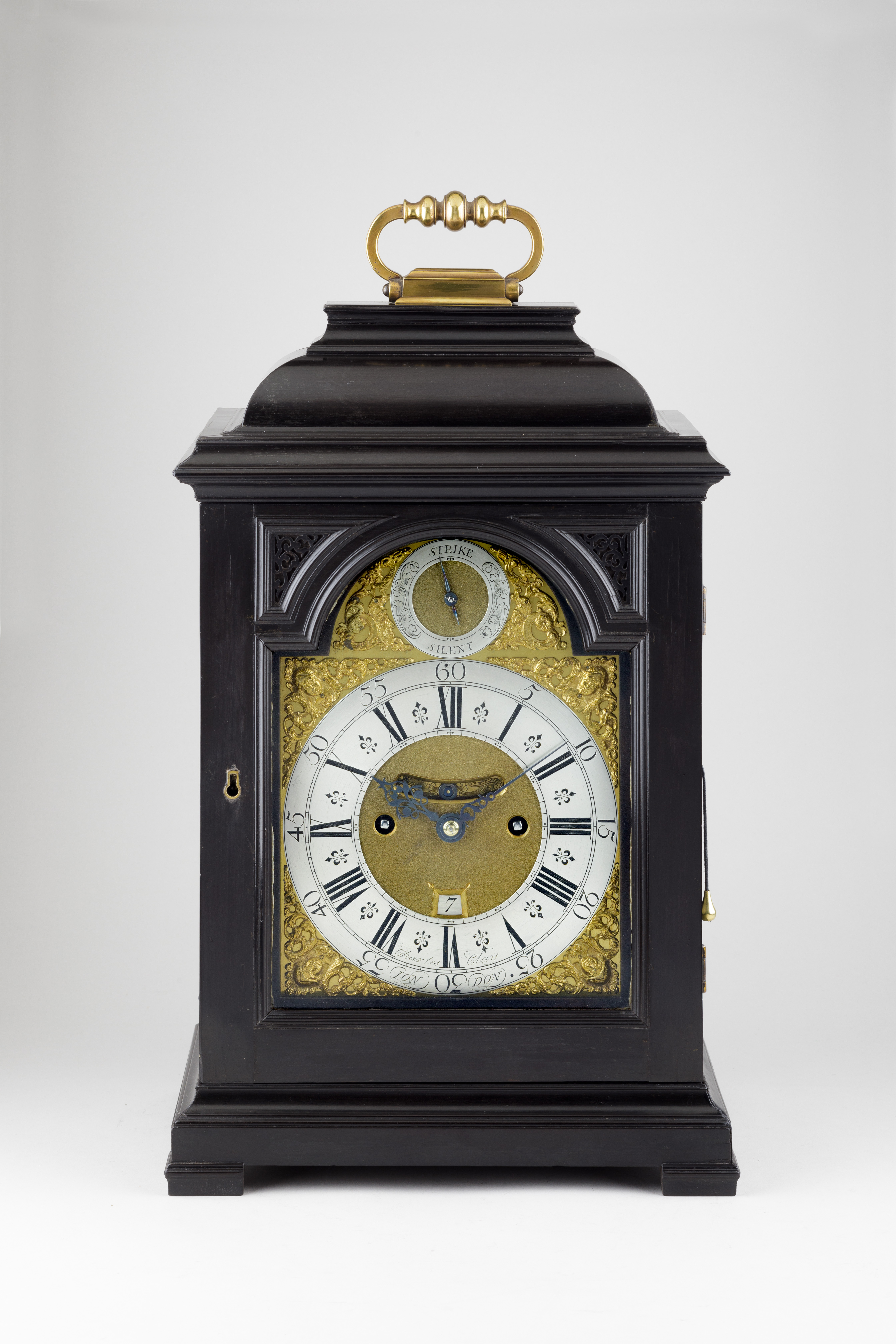
Charles Clay, London

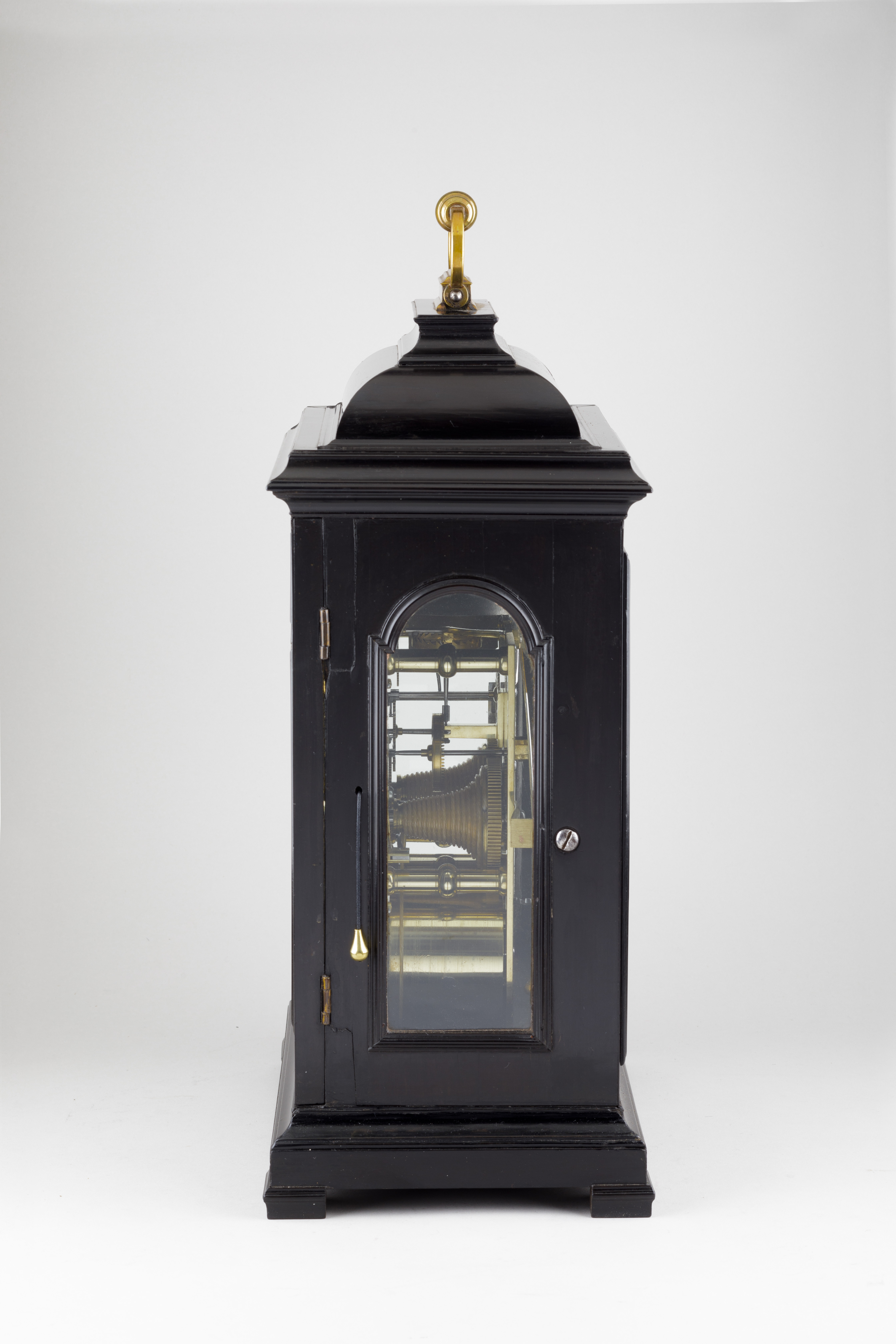
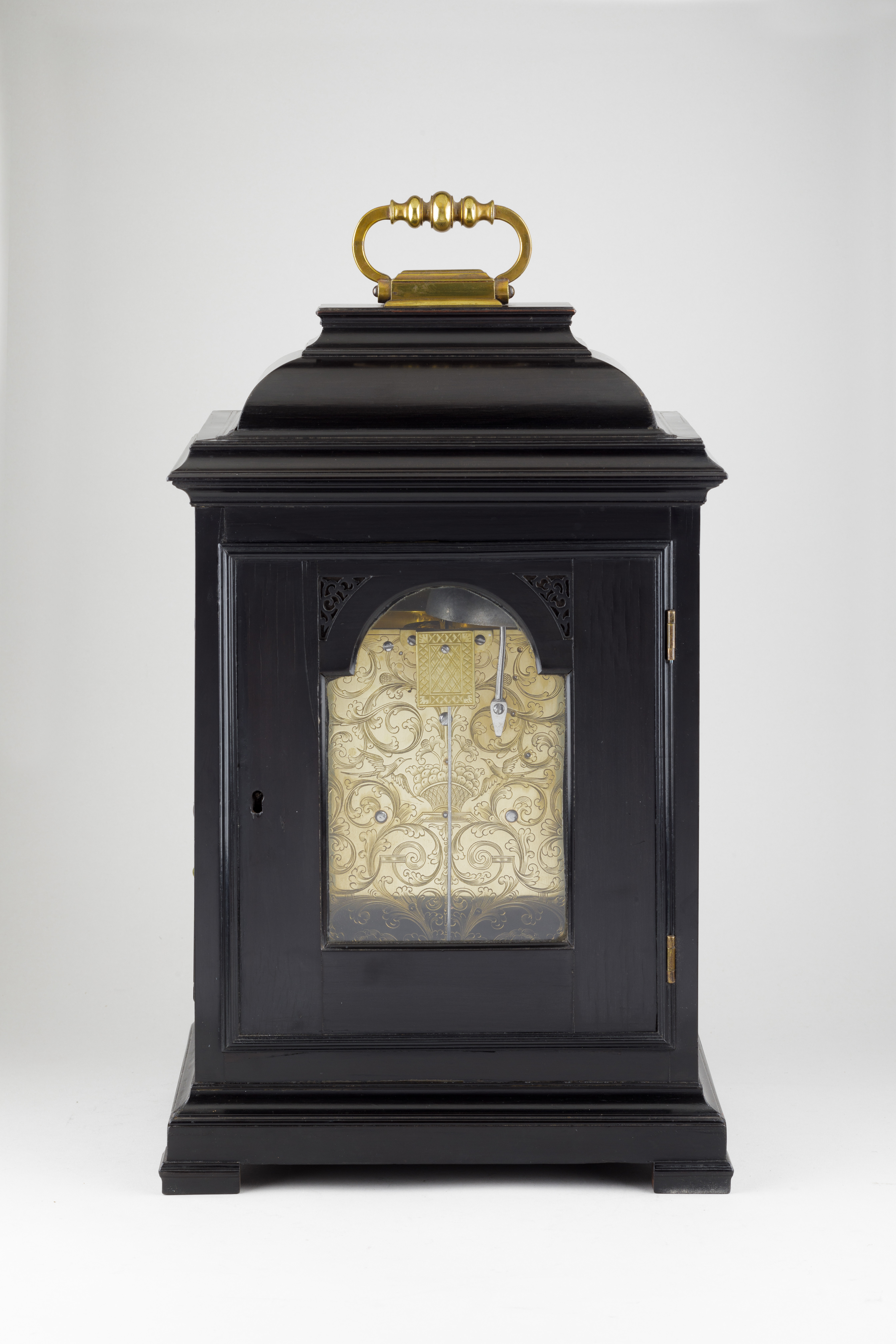
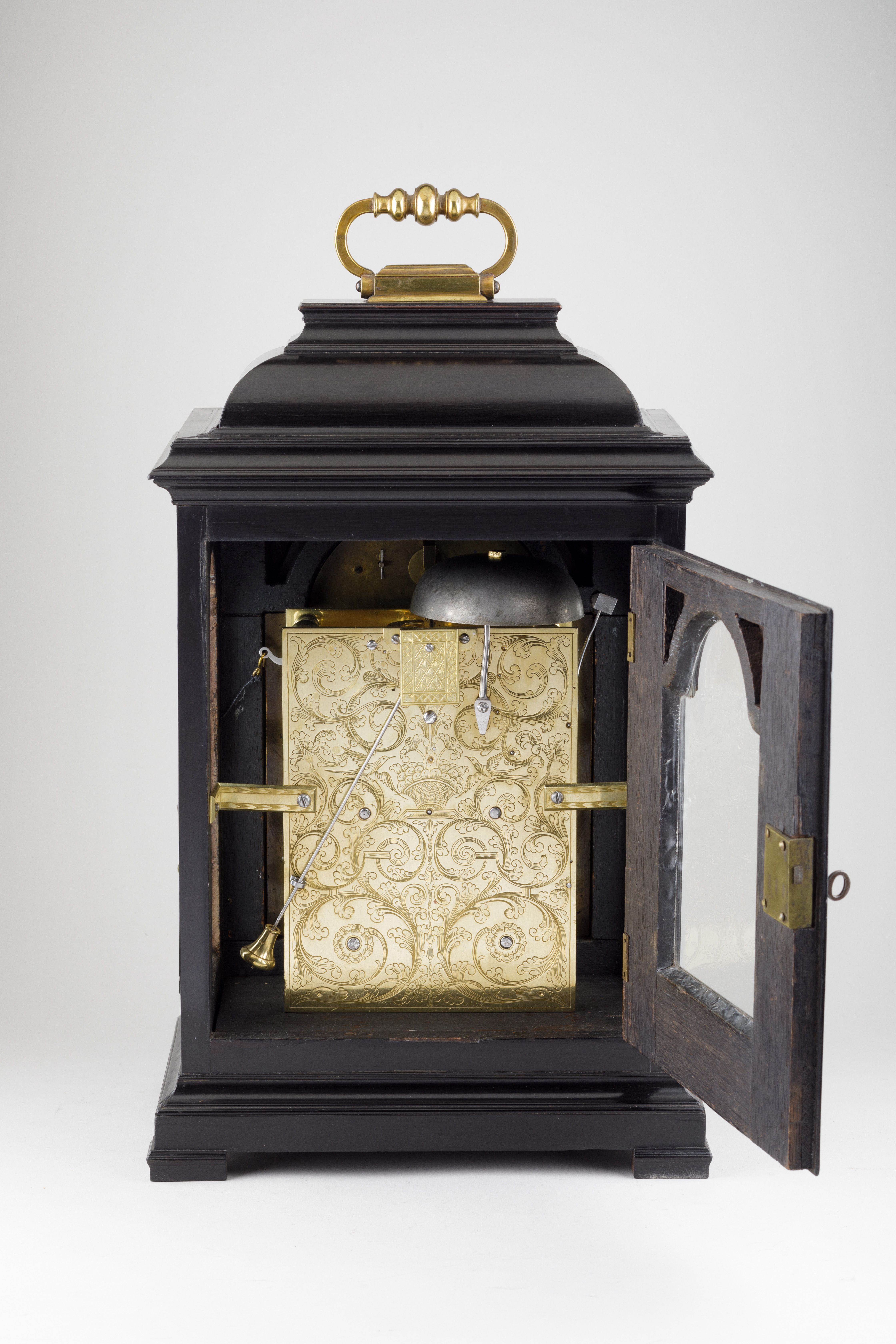
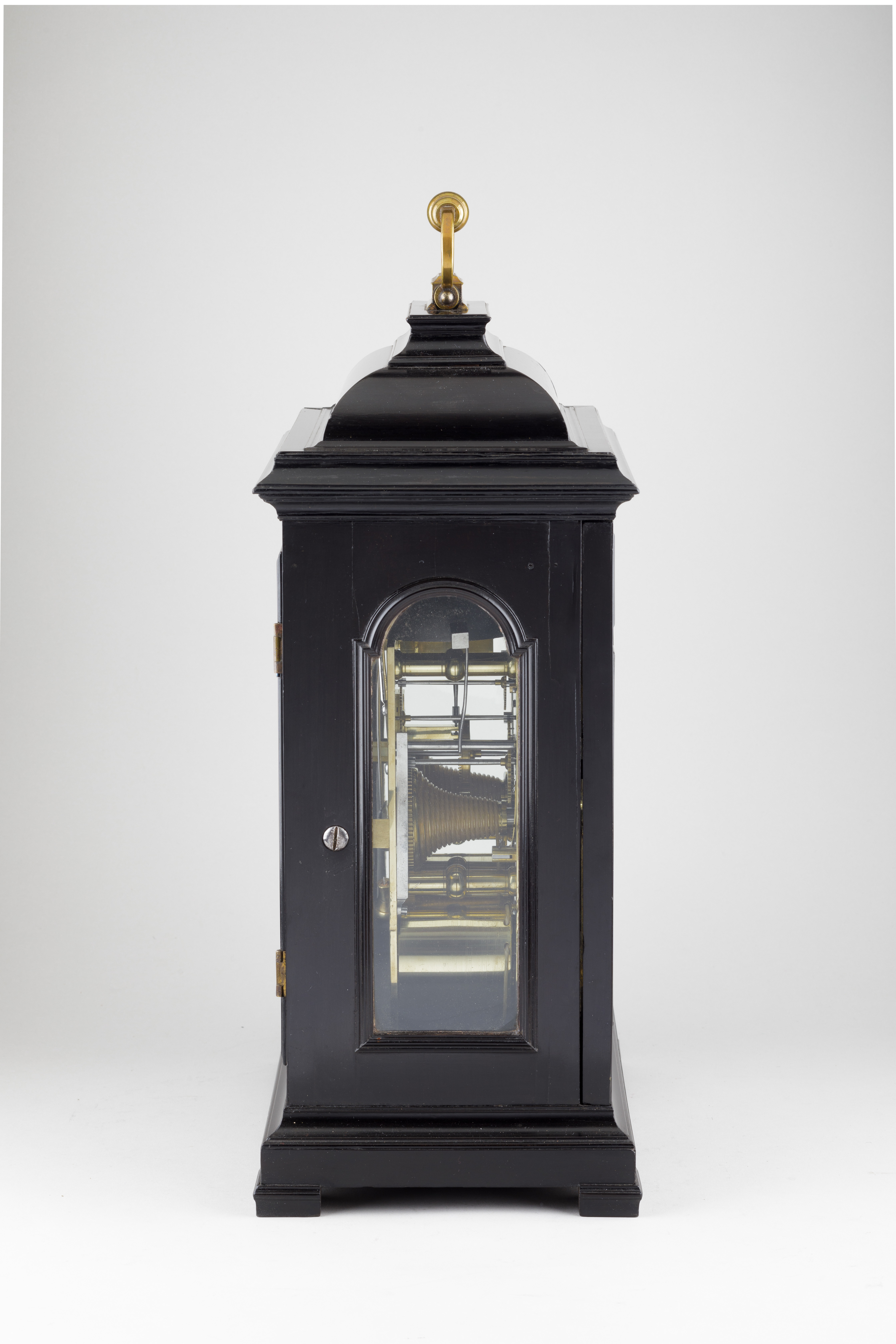
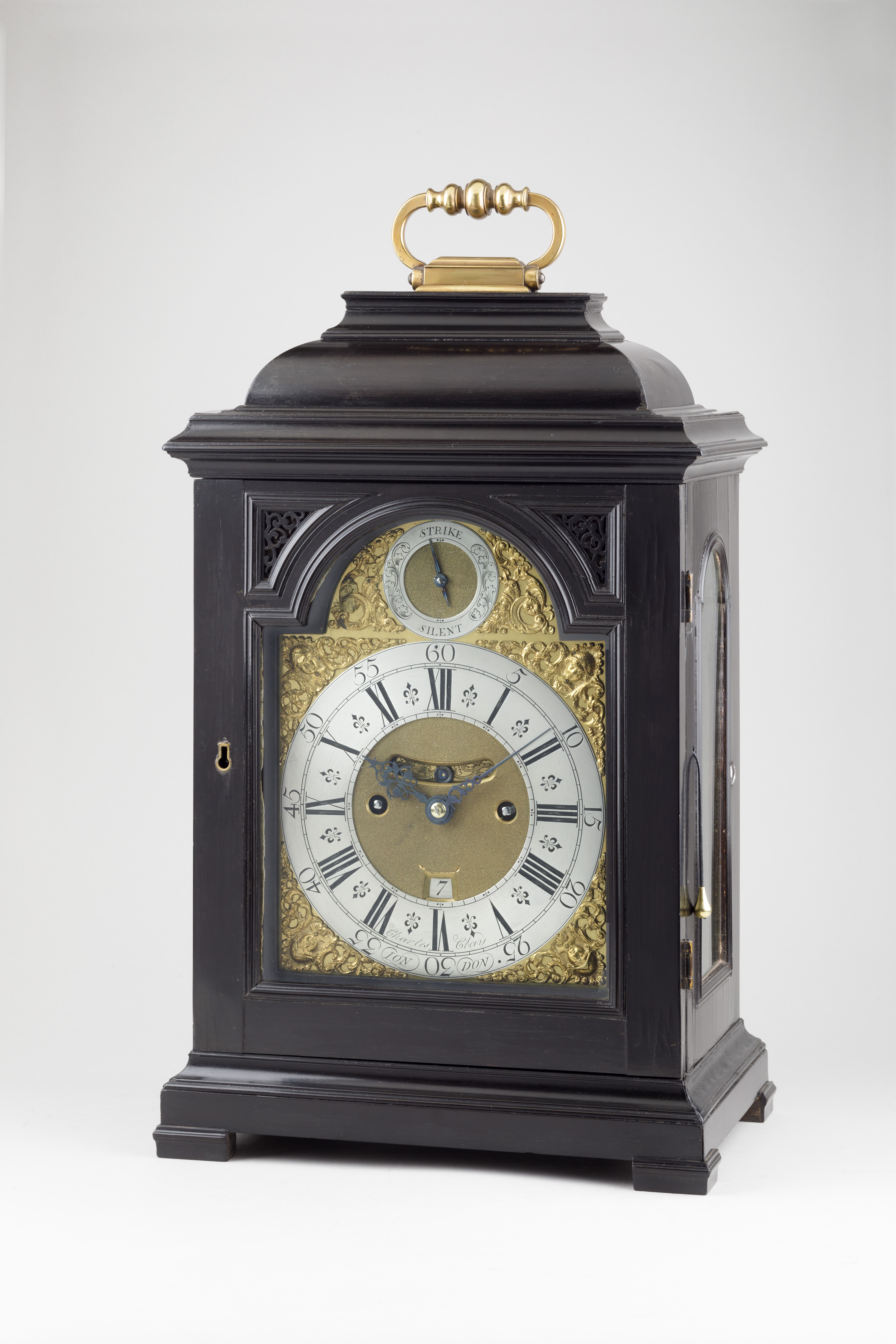
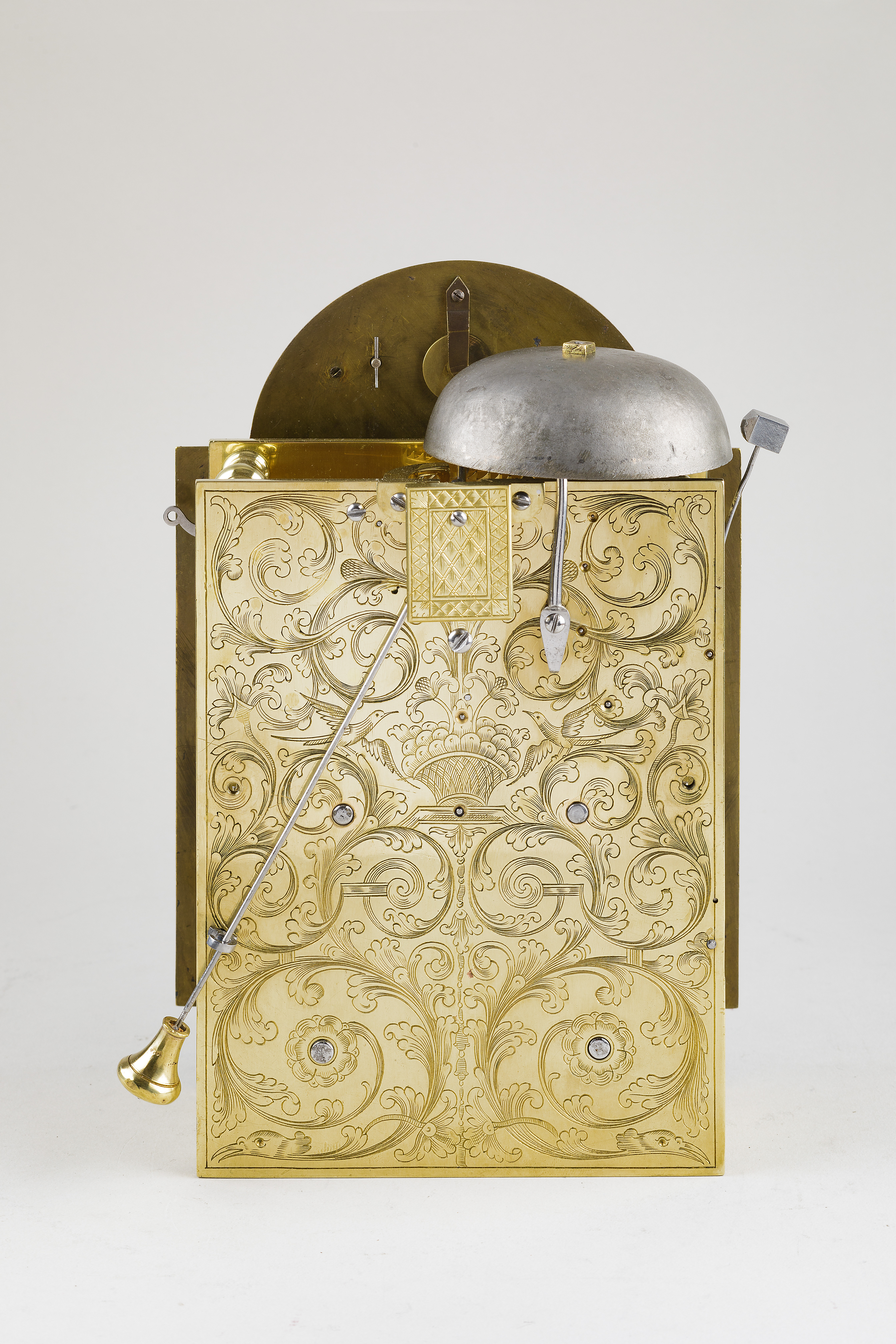
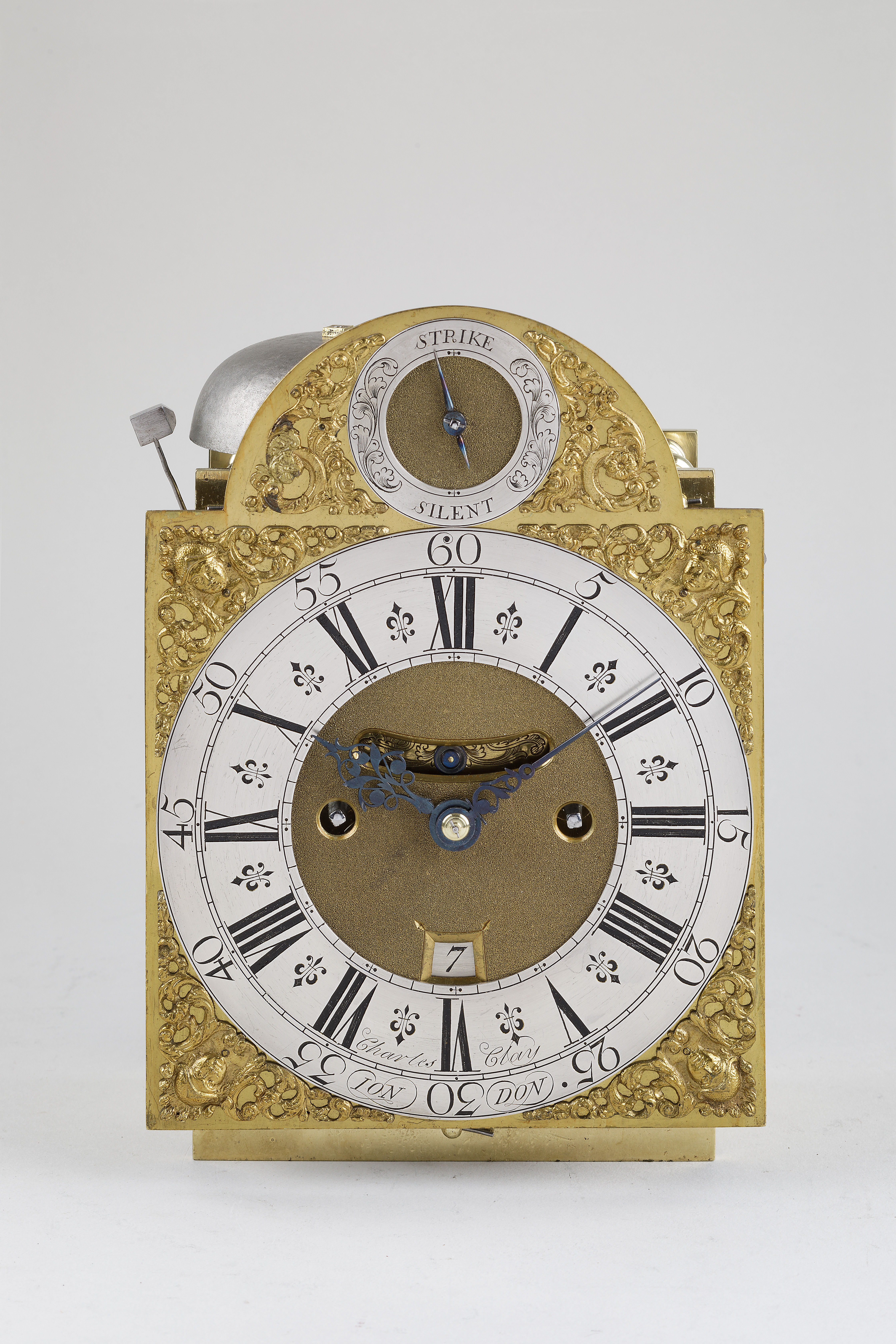
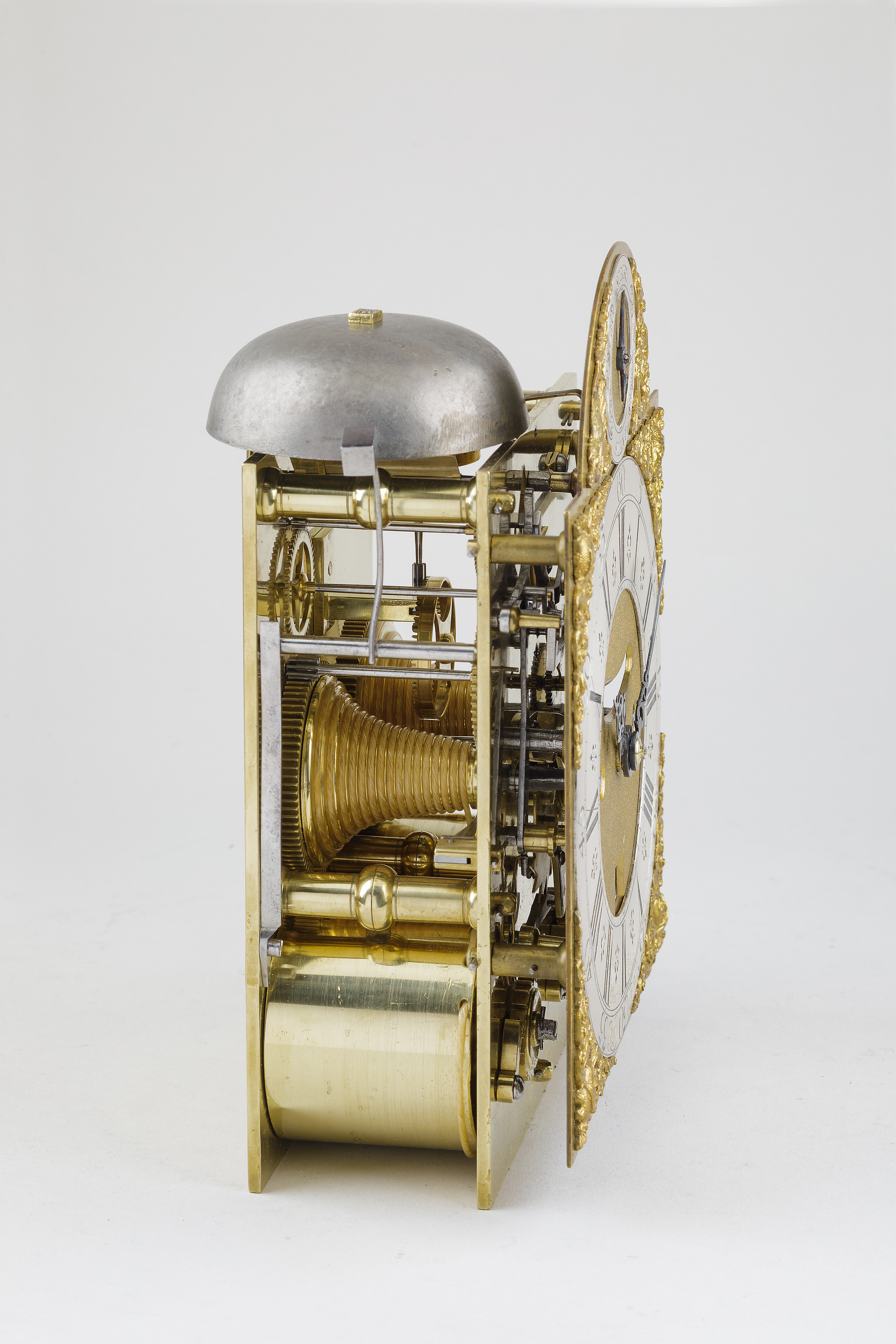
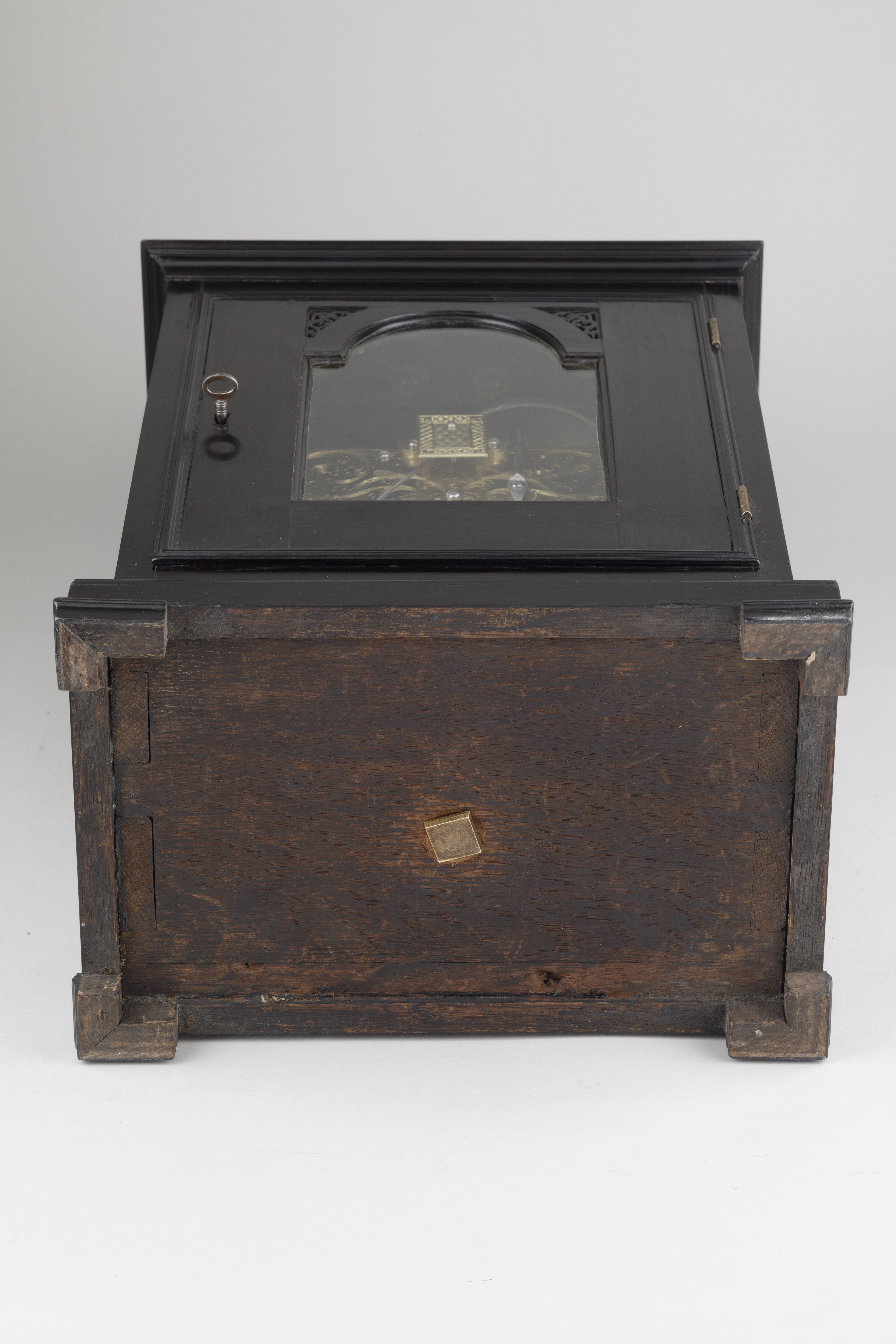
Circa 1730
Sold
15 ½ inches high
A fine ebony striking table clock with repeat. Case The ebony veneered case has fine mouldings, an inverted bell top with baluster brass carrying handle. Glazed sides with ebony mouldings and ebony block feet Dial The break arch dial is signed Charles Clay London on the silvered chapter ring with blued steel hands, the matted centre has both mock pendulum and calendar apertures, strike / silent ring in the arch. Movement The fine quality movement has five baluster pillars, twin fusees with gut lines and spring barrels, hour strike and trip repeat on a bell, the going train with knife-edge verge escapement. The backplate is engraved with symmetrical scrolling foliage and it has 2 engraved securing brackets for the case. Charles Clay was born in Yorkshire and was established as a clockmaker in London by 1716. He is particularly known for his musical organ clocks, examples of which can be found in the British Royal Collection at Kensington Palace and Windsor Castle. His musical clocks were in the form of miniature temples, advertised in contemporary newspapers and tickets were sold for the public to view his pieces. They played tunes from contemporary Italian opera performed in London including those transcribed by George Frederick Handel for Mr Clay''s use. He was clockmaker to his Majesty''s board of works between 1723 until his death in 1740.
